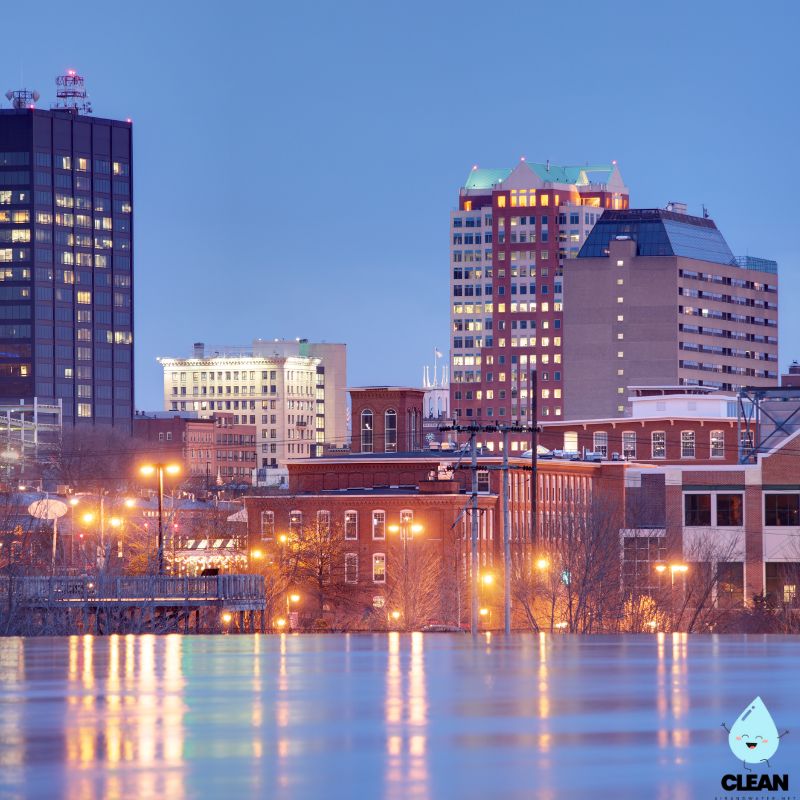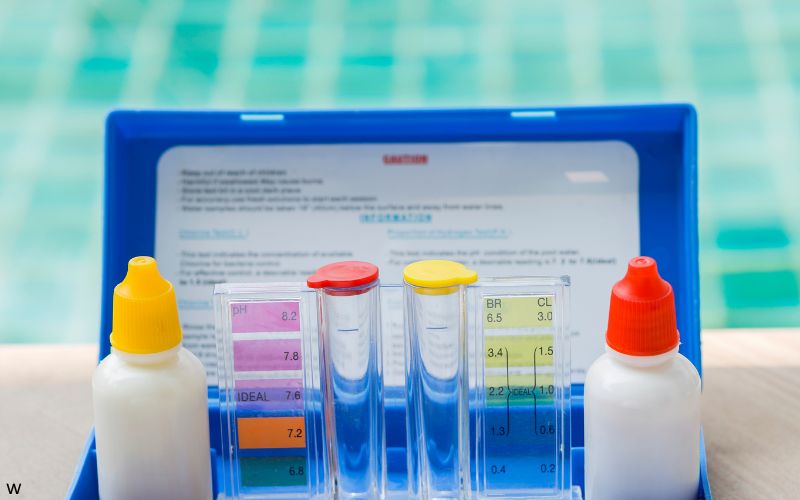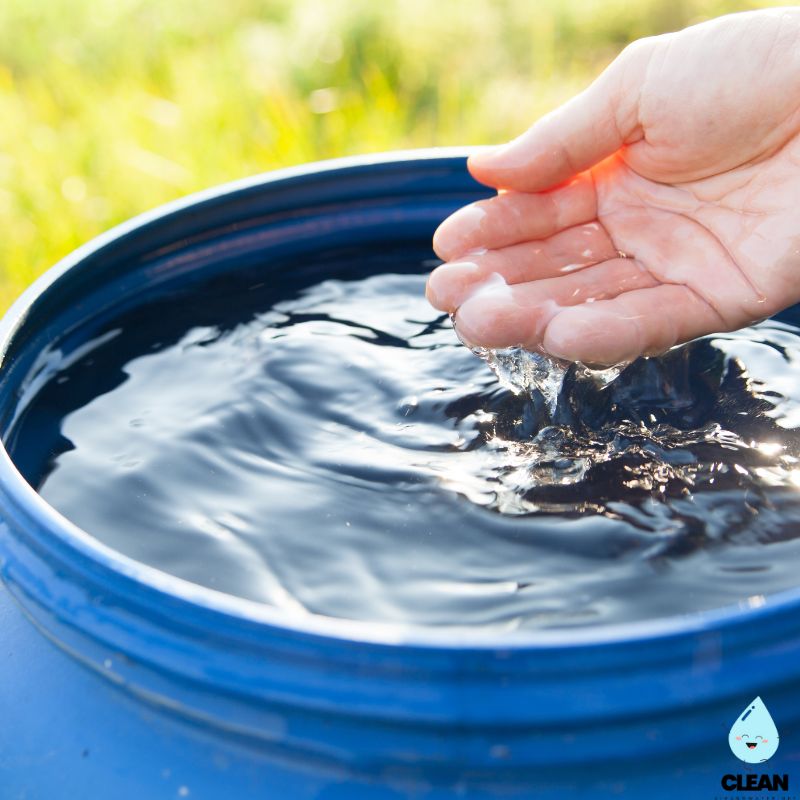Manchester, New Hampshire Water Quality at a Glance
moderate concerns
Is Manchester Water Safe to Drink?
Generally Yes, With Moderate Caution – Manchester water meets federal standards and sources from protected Lake Massabesic since 1874. The water undergoes advanced treatment including ozone disinfection and granular activated carbon filtration. PFAS detected at 4.68 ppt for PFOA (below NH limit of 12 ppt), with concerns about disinfection byproducts including trihalomethanes and haloacetic acids from chlorination processes.
⚠️ Key Concerns for Manchester Residents
- PFAS “Forever Chemicals”: PFOA detected at 4.68 ppt (below NH limit of 12 ppt); part of statewide contamination affecting 30% of tested wells
- Disinfection Byproducts: Trihalomethanes (TTHMs) and haloacetic acids from chlorination; bromodichloromethane and chloroform present
- Source Water Transition: 2023 addition of Merrimack River source alongside Lake Massabesic raises monitoring needs
- Aging Infrastructure: 500+ mile distribution system and sewer connections create potential contamination pathways
Read the full report below for detailed analysis, treatment information, and actionable recommendations for Manchester residents.
Manchester – New Hampshire – Water Quality Report 2025: PFAS Testing, Infrastructure Concerns & Safety across your city
Manchester Water Works provides essential water services to approximately 160,000 residents across Manchester, New Hampshire and portions of Auburn, Bedford, Derry, Goffstown, Hooksett, Londonderry, Salem, Windham, Hampstead, Atkinson, and Plaistow. Established in 1874, the system maintains over 500 miles of water distribution lines, multiple treatment facilities, and advanced infrastructure that delivers an average of 17 million gallons of drinking water daily to New Hampshire’s largest city and surrounding communities.
Manchester sources its drinking water primarily from Lake Massabesic, a 2,560-acre reservoir covering parts of Manchester and Auburn that has served as the region’s water supply for over 150 years. The lake water is treated at Manchester’s Water Treatment Plant, completed in 1974 and significantly upgraded from 2003 to 2006, with a maximum capacity of 50 million gallons per day. In August 2023, Manchester activated a new water source with the completion of the Merrimack River Treatment Facility in Hooksett, featuring advanced radial collector well technology and providing up to 7.2 million gallons per day of additional capacity. Manchester’s water consistently meets all federal and state quality standards, though the utility faces ongoing challenges with infrastructure modernization, emerging contaminants like PFAS, and meeting growing regional demand.

Manchester Water Quality: Current Status (2024-2025)
Latest Testing Results
- Federal Compliance: For the most recent quarter assessed by the U.S. EPA (April 2024 – June 2024), Manchester Water Works was in full compliance with all federal health-based drinking water standards.
- Testing Scope: Manchester conducts comprehensive water quality monitoring throughout the system, including routine testing at treatment facilities and throughout the 500+ mile distribution network.
- Compliance Status: Manchester’s water consistently meets all federal and state drinking water standards, maintaining compliance with EPA and New Hampshire Department of Environmental Services regulations.
Water Sources
- Lake Massabesic: Primary source since 1874, covering 2,560 acres in Manchester and Auburn with a name meaning “place of much water” in Native American language, providing the main water supply for the region.
- Merrimack River Source: New radial collector well system activated in August 2023, using innovative riverbank filtration technology located in Hooksett to provide additional supply capacity.
- Watershed Protection: Lake Massabesic receives four high and four medium vulnerability ratings in state assessments, with comprehensive watershed protection measures to maintain water quality for drinking water purposes.
Advanced Treatment Technology
- Lake Massabesic Treatment Plant: Main facility completed in 1974 and significantly upgraded from 2003 to 2006, utilizing multi-barrier treatment including rapid mixing, coagulation, flocculation, sedimentation, intermediate ozone treatment, and granular activated carbon filtration with a maximum capacity of 50 million gallons per day.
- Merrimack River Treatment Facility: State-of-the-art facility opened in August 2023 in Hooksett featuring greensand filtration, granular activated carbon contactors, and ultraviolet light disinfection for advanced water purification.
- Disinfection Management: Uses monochloramine as primary disinfectant (chlorine combined with ammonia at 4.5:1 ratio) with periodic temporary switches to free chlorine for system maintenance and biofilm prevention.
Infrastructure Modernization
- Regional Water Project: Manchester serves as the hub for the Southern New Hampshire Regional Water Project, providing water to Salem, Windham, Hampstead, Atkinson, and Plaistow through the regional interconnection system.
- Distribution System: Over 500 miles of water distribution lines serving the greater Manchester area, with ongoing modernization including water main replacements and system improvements.
- Emergency Preparedness: Dual-source capability from Lake Massabesic and Merrimack River provides enhanced system resilience and security of supply during maintenance, emergencies, or seasonal demand fluctuations.
Customer Protection Initiatives
Manchester Water Works provides comprehensive customer support through various programs, including water service line protection services from the property line into homes. The utility maintains transparent communication through annual water quality reports published each April and proactive public notifications about system changes such as disinfection conversions. Manchester’s significant investments in treatment technology upgrades and the new Merrimack River facility demonstrate the utility’s commitment to providing safe, reliable drinking water while addressing future challenges including population growth, emerging contaminants, and the need to serve additional regional communities. The utility’s customer service at 603-792-2803 ensures response to water quality concerns and system information.
Recommendations for Manchester Residents

Monitor Water Quality
Stay informed about Manchester’s water quality through annual water quality reports available at manchesternh.gov/Departments/Water-Works/Water-Quality-Report. Contact Manchester Water Works at 603-792-2803 for any water quality concerns or to request testing information.

Conserve Water
Help protect Lake Massabesic and the Merrimack River sources by practicing water conservation. Report leaks promptly to Manchester Water Works and consider drought-resistant landscaping during peak summer demand periods when consumption can reach 20 million gallons per day.

Consider Home Filtration
While Manchester’s water meets all standards, residents concerned about emerging contaminants like PFAS (detected at 4.68 ppt PFOA) or disinfection byproducts may benefit from NSF-certified home filtration systems for drinking and cooking water.

Protect Service Lines
Consider Manchester Water Works’ Service Line Protection Plan, which covers the water service line from your property line into your home. Contact customer service at 603-792-2803 for information about this optional program to protect against unexpected repair costs.

Report Issues
Contact Manchester Water Works Customer Service at 603-792-2803 during business hours for water quality concerns, or use the 24-hour emergency line for urgent issues like water main breaks, pressure problems, or system emergencies. Report any leaks immediately to help maintain system integrity.
Frequently Asked Questions
Is Manchester’s tap water safe to drink?
Yes, Manchester’s tap water meets all federal and state drinking water standards. The water comes from two sources: Lake Massabesic (primary source since 1874) and the Merrimack River (secondary source activated in August 2023), both of which undergo comprehensive multi-barrier treatment.
Manchester Water Works conducts extensive testing to ensure water quality throughout the system. The Lake Massabesic treatment plant has been serving the region since 1974 with continuous upgrades including a major renovation from 2003 to 2006, while the new Merrimack River facility incorporates cutting-edge treatment technology. The utility’s commitment to safety is demonstrated through transparent reporting and proactive communication about any system changes.
Why does my water taste different sometimes?
Taste changes can occur due to several factors:
1. Disinfection management: Manchester Water Works uses monochloramine as the primary disinfectant but may temporarily switch to free chlorine for system maintenance, which can cause a more noticeable chlorine taste or odor
2. Seasonal demand changes: Summer water consumption can reach 20 million gallons per day (double the average), which may affect source water characteristics
3. Natural source water variations: Changes in Lake Massabesic and Merrimack River water temperature and quality can affect taste
If taste or odor issues persist, contact Manchester Water Works at 603-792-2803 for assistance. Running cold water for 2 minutes or refrigerating water in an open pitcher can help dissipate chlorine taste.
What about PFAS in Manchester’s water?
PFAS (per- and polyfluoroalkyl substances) have been detected at low levels in Manchester’s water, consistent with widespread environmental contamination throughout New Hampshire:
• Current levels: PFOA detected at 4.68 ppt at the Lake Massabesic treatment plant, which is below New Hampshire’s maximum contaminant level of 12 ppt
• Monitoring: Manchester Water Works monitors PFAS levels in accordance with New Hampshire’s strict regulations, among the most protective in the nation
• Treatment capability: The new Merrimack River Treatment Facility includes granular activated carbon treatment, which is effective at removing PFAS compounds
• Regional context: Approximately 30% of tested wells in New Hampshire show PFAS contamination, with Manchester’s levels being relatively low
Manchester continues to monitor and address emerging contaminants while maintaining compliance with all current regulations.
How does the new Merrimack River source work?
Manchester’s new water source, activated in August 2023, uses innovative radial collector well technology located in Hooksett:
Radial Collector Well System:
• Combination of groundwater and surface water enters through horizontal well laterals about 50 feet below the riverbed
• Uses natural sand-and-gravel filtration as the first treatment barrier
• Raw water travels through a 20-inch pipeline three-quarters of a mile to the treatment facility
Treatment Process:
• Greensand filtration for manganese and iron removal
• Granular activated carbon contactors for taste, odor, and organic compound removal
• Ultraviolet light disinfection for virus and pathogen inactivation
• 500,000-gallon clearwell for contact time and final water quality assurance
This dual-source approach provides enhanced reliability and helps Manchester serve additional communities through the Southern New Hampshire Regional Water Project.
Quality News About Your Water
Get the comprehensive water quality news coverage you need with our dedicated US Water News Service. From coast to coast, we deliver in-depth reporting and expert analysis on PFAS contamination, EPA regulatory changes, infrastructure developments, and emerging water safety issues affecting communities nationwide. While mainstream media only covers the biggest stories, we provide the detailed, ongoing coverage that helps you understand the full scope of America’s water challenges. Whether you’re a concerned citizen, water professional, or community leader, our daily updates and analytical insights keep you informed about the issues that matter most to public health and environmental safety.
Contaminants of Concern

PFAS Compounds
Source: Per- and polyfluoroalkyl substances from historical use of firefighting foams and industrial processes that have contaminated groundwater and surface water sources throughout New Hampshire
Health Effects: Research indicates potential health concerns including impacts on immune system, thyroid function, cholesterol levels, and possible links to certain cancers
Current Status: PFOA detected at 4.68 ppt at Lake Massabesic plant, below New Hampshire’s maximum contaminant level of 12 ppt; Manchester has incorporated PFAS-removal technology in the new Merrimack River facility NH Limits: 12 ppt for PFOA, 15 ppt for PFOS, 18 ppt for PFHxS, 11 ppt for PFNA

Disinfection Byproducts
Source: Formed when disinfectants such as chlorine or chloramine react with naturally occurring organic matter in Lake Massabesic and Merrimack River source waters
Health Effects: Long-term exposure to elevated levels may increase risk of certain cancers and potentially affect liver, kidney, and central nervous system
Current Levels: HAAs detected at 3.83 ppb and TTHMs at 4.1 ppb in 2023, both well below EPA maximum contaminant levels EPA Limits: 80 ppb for total trihalomethanes (TTHMs) and 60 ppb for haloacetic acids (HAA5)
Please read – our information
The information presented on cleanairandwater.net is compiled from official water quality reports, trusted news sources, government websites, and public health resources. While we strive for accuracy and thoroughness in our presentations, we are not scientists, engineers, or qualified water quality professionals.
Our mission is to present water quality information in an accessible, real-world format that helps people understand what’s in their water and make informed decisions about their health and safety. We believe that complex environmental information should be available to everyone in a format that’s easy to understand.
We make every effort to ensure our content is current and accurate, but we cannot guarantee that all information is complete or error-free. This website should not replace official communications from your local water utility or health department. We always recommend consulting official sources for the most up-to-date information regarding your specific water system.
Clean Air and Water is not liable for any unintentional errors, omissions, or outdated information. The content on this site is provided for informational purposes only and should not be considered professional advice.


